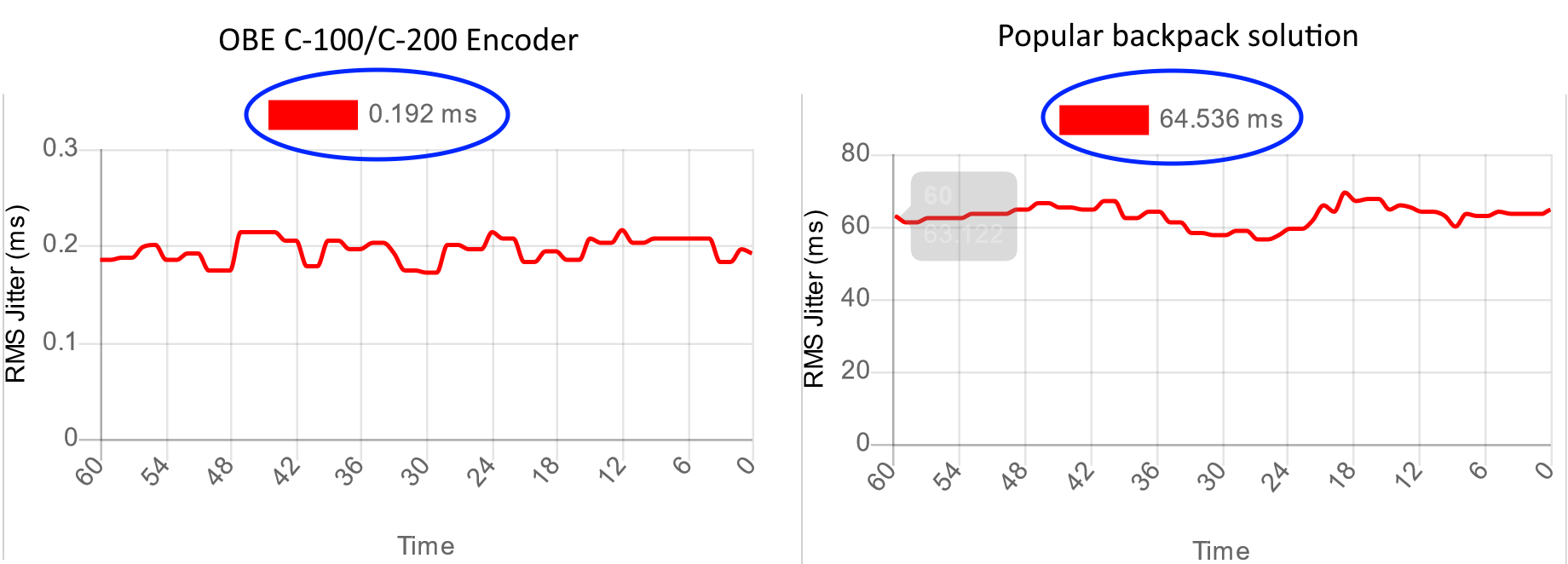Introduction
SMPTE ST 2022-7 hitless switching has been used extensively for high value content by transmitting across two IP paths, often operated by different service providers. Using multiple ISPs like Verizon and AT&T is beneficial with internet transport too as ISPs often have individual issues. However, traditional 2022-7 does not translate directly into the unmanaged world of the internet. This blog post will go into detail about why this is the case and how care and attention is needed when doing hitless switching over the public internet. This is important to maintain maximum performance to make sure high value content is delivered without packet loss.
Traditional 2022-7 (aka hitless switching)
 The sender sends identical packet contents over two links, often called Red and Blue (for example Verizon and AT&T). The receiver then buffers packets and chooses a packet from either link to create an output using the RTP sequence number. This means that lost packets can be recovered from the second link. Note how there aren’t any active packet recoveries yet.
The sender sends identical packet contents over two links, often called Red and Blue (for example Verizon and AT&T). The receiver then buffers packets and chooses a packet from either link to create an output using the RTP sequence number. This means that lost packets can be recovered from the second link. Note how there aren’t any active packet recoveries yet.
Naive 2022-7 over the internet (aka “RTP over SRT”, “Enhanced RTP” etc)
 Many users are naively recreating 2022-7 currently creating two independent SRT sessions. This can be seen with the above diagram, with retransmissions in green. Independent is an important term here as the input buffers know nothing about each other. This is highly suboptimal as wasteful retransmissions occur on path A even if path B is perfectly clean. During situations where both ISPs are having packet loss at the same time, this is exceptionally wasteful as each link does not know about the packets of the other. This substantially reduced performance can lead to packet loss, especially if links are bandwidth constrained.
Many users are naively recreating 2022-7 currently creating two independent SRT sessions. This can be seen with the above diagram, with retransmissions in green. Independent is an important term here as the input buffers know nothing about each other. This is highly suboptimal as wasteful retransmissions occur on path A even if path B is perfectly clean. During situations where both ISPs are having packet loss at the same time, this is exceptionally wasteful as each link does not know about the packets of the other. This substantially reduced performance can lead to packet loss, especially if links are bandwidth constrained.
Multiple ISPs done properly (RIST multipathing, Zixi multipathing, SRT unstable “bonding”)

There is a small but important change in this diagram. A single input buffer means the receiver is now aware of packets from both paths. The receiver now only requests retransmissions for packets lost on both links. In addition it can request the retransmission on both links, maximising the chances of packet recovery. This is substantially better than the naive approach.
(Note that SRT uses the term “bonding” to describe this configuration in contrast to the rest of the industry where bonding refers to load sharing.)

Doing it for real
Using an OBE C-200 Encoder, RIST multipathing was used for real on a London to New York Link with two ISPs at ~35Mbit/s. Zero packets were lost out of 90 billion over nine months! Both ISPs had outages during this period but the stream was unaffected. This is the optimal solution for high value transmissions.
Conclusions
Multiple ISPs are vital for high value transmissions but careful design is needed to maximise packet recovery. RIST is the only protocol with currently functional multipathing, SRT’s implementation is still unstable and consumer protocols like RTMP and WebRTC do not support multipathing. RIST multipathing has been in production for many years. More complex approaches such as bonding (load sharing) are also possible with 4G/5G/LEO networks (more on that another day).

